

Do 18G-1

Designed in the in 30's as a replacement for Dornier's Wal flying boat, the Do 18 was initially to fill both the requirements of the Lufthansa and the Luftwaffe. The Do-18 was probably the most aerodynamically advanced water-borne aircraft at that time with the sponsons providing lateral stability in place of wing mounted floats. It was power by Junkers Jumo six cylinder diesel engines which offered much lower fuel consumption than the conventional gasoline engines for the same power output available at that time. The first aircraft were delivered to the Luftwaffe in 1936 and were used for long range reconnaissance, liaison and search and rescue missions. By 1939 the aircraft was considered to be obsolete. It had good handling qualities both in the air and on the water and good range but was inadequately armed and it's cruise and maximum speeds considered too slow. It was scheduled to be phased out of production in 1939 but the protracted development of its replacement, the Bv 138 caused them to extend its production life and as a result it was given more powerful engines and improved armament which included a 20mm gun in a powered turret. Production was finally phased out in the summer of 1940 with approximately 160 having been built.
The Kit
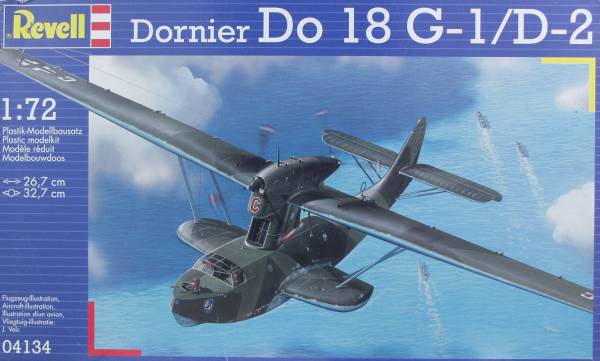
The heritage of this kit can be traced back to Matchbox who released the kit originally back in the 70's in multi color plastic that was typical for them at the time. Matchbox kits were known for their trench like surface detail but generally were well fitting. The Revell of Germany release is molded in light gray plastic which is a little easier on the eyes than the original Matchbox release. The only after market item I am aware of is a canopy set from Falcon which is part of their set # 29.
The kit comes in a dreaded end flap box with nice artwork on the front. Inside the box all the parts are contained in a single bag, not a good thing. The parts are molded in a light greenish gray with very little flash and only small parting lines to clean up on the smaller parts. The panel detail is recessed with the typical Matchbox trench lines except the fuselage which has no panel detail at all. The bottom of the sponsons have some raised detail on them. The control surfaces are separate but not pose able without some modification. The fabric detail is a bit overdone for the scale. I did not find any major surface defects on the main air frame parts.There were no ejector pin marks that will show after assembly. The cockpit has minimal detail, bulkheads, instrument panel, seats with no harnesses, control columns. Not much will be seen through the cockpit glazings anyway. Another down side to the kit is that no beaching gear or dolly is provided, the modeler is on his own to come up with a way to display the model.Altogether there are 69 parts in gray. The clear parts are thick and only moderately clear with well defined frame lines. The round glazing all had either a bullseye or bubbles in them. Total for clear parts is 9 for a kit total of 78. See photos below.
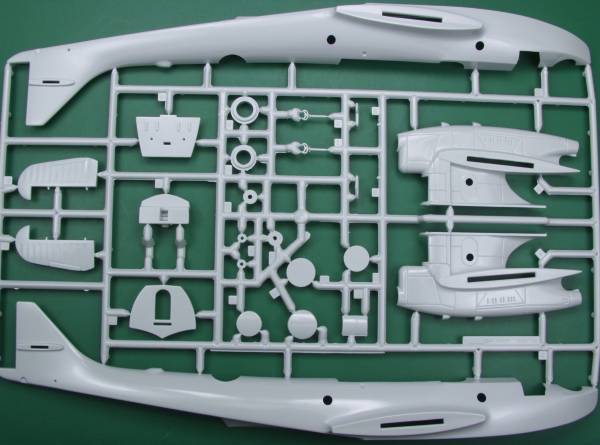
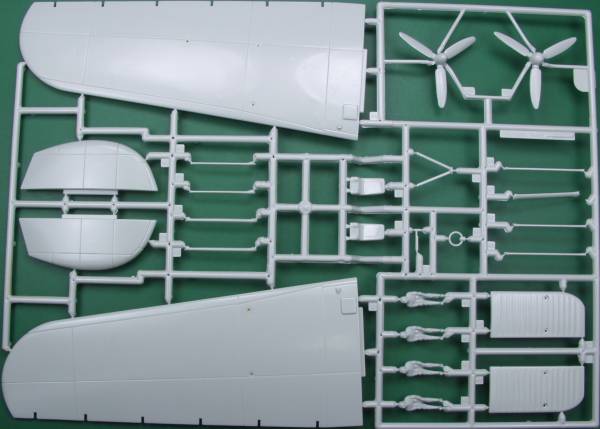
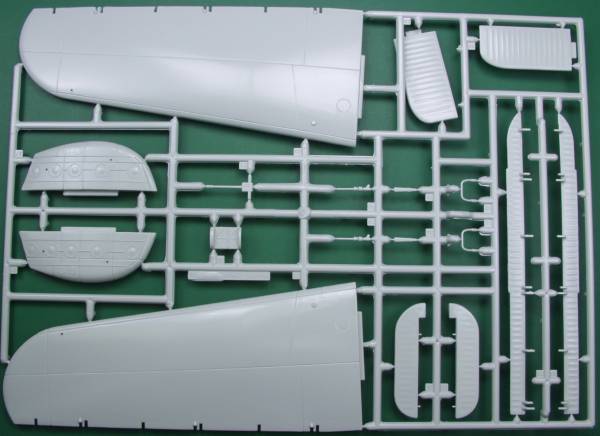
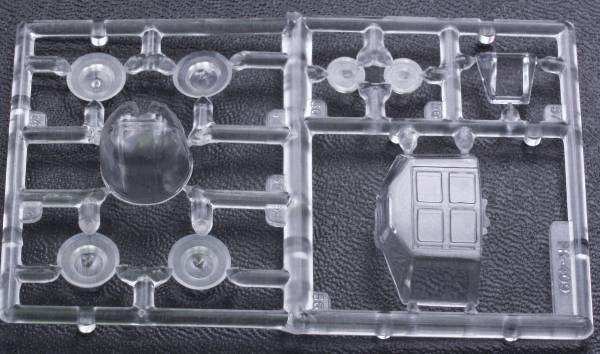
The decals appear a bit thick but are well registered. Some stenciling is supplied but no swastikas. The sheet supplies markings for two aircraft. See below.
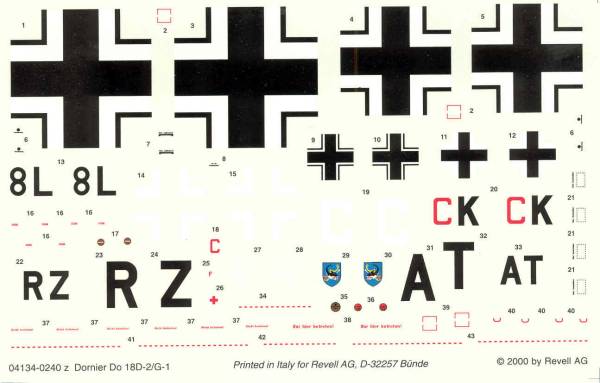
The instructions are contained in a A4 sized 12 page booklet. The first six pages are history in two languages followed by warnings and general modeling instructions in eighteen languages, a page of symbols and a paint chart and parts map and finally assembly instructions start on page seven. Seven through ten are assembly and eleven and twelve deal with paint and markings.
The only after market item I am aware of for this kit is replacement canopies in Falcon set # 29.
Conclusions
This is a mediocre kit at best but it's all we have save for an ancient vacuform kit from Airmodel. Recommended for die hard Luftwaffe fans only.
Links to kit build or reviews
A
nice build review can be found here.
None that are still online.
References
Updated 5/10/08